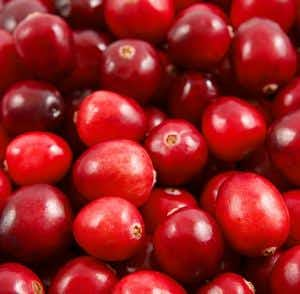
Dietary flavonoids make fruits and vegetables colorful. The anthocyanidins have lovely red and purple colors. They are found in colorful berries such as cranberries, currants and blueberries.
What Will a Diet with Colorful Berries Do for Your Health?
In a study of stroke risk, more than 16,000 healthy Americans filled out detailed questionnaires about what they ate. (The study is called REGARDS: Reasons for Geographic and Racial Differences in Stroke.) The researchers then calculated how much anthocyanidins and proanthocyanidins the volunteers were eating. They also monitored the participants’ health for approximately six years.
People who ate more of these compounds were less likely to develop heart disease during the study. The researchers had to adjust for the fact that the volunteers who ate more colorful berries were also wealthier, better educated, more likely to exercise and less likely to smoke.
American Journal of Clinical Nutrition, Nov., 2016
Which Foods Should You Choose to Get Heart Benefits?
The USDA flavonoid database can tell you how much of the anthocyanidins cyanidin, delphinidin, malvidin, pelargonadin, peonidin and petunidin are present in colorful berries such as
- açai,
- acerola,
- bilberries,
- blackberries,
- blueberries,
- bramble berries,
- chokeberries,
- cloudberries,
- cranberries,
- fresh currants,
- elderberries,
- gooseberries,
- lingonberries,
- raspberries,
- service berries,
- strawberries and
- wineberries
as well as foods such as
- apples (with skin),
- avocados,
- cherries,
- eggplant,
- hazelnuts,
- nectarines (with skin),
- pears,
- pecans,
- pink grapefruit,
- pistachios,
- plums,
- radishes,
- red cabbage,
- red lettuce,
- red onions,
- red or Concord grapes,
- red wine vinegar or
- walnuts.
In general, more of the compounds are in the skin. More colorful foods have more anthocyanidins. Eating these foods raw seems to provide the largest amounts of beneficial compounds.
Why not follow either a DASH diet or a Mediterranean diet? The generous quantities of vegetables and fruits in these eating plans may provide enough of these colorful plant chemicals to be helpful. If you would like some pointers on how to follow one of these diets, we recommend our book, The People’s Pharmacy Quick & Handy Home Remedies. It offers the details you need.

